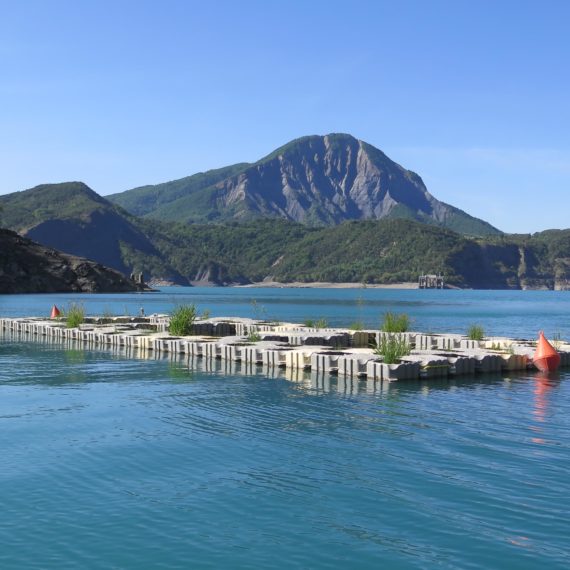Project GROEN LEVEN – Netherlands (ongoing)
BIOHUT UNDER THE LARGEST FLOATING PHOTOVOLTAIC PARK IN EUROPE!
This project was set up following the initiative of the Dutch company Groen Laven, which wished to set up artificial Biohut habitats underneath their newly installed floating photovoltaic park in Zwolle.
This floating solar park, with a surface area of 18 hectares, is the largest in Europe at the time of installation.
Several weeks after the installation of the floating solar panels, 29 Biohut pontoons were installed in 3 areas of the park.
To better understand the Biohut habitat functioning within this water body, a former sand mining site, Biohut are monitored annually by the Ecocean team to list species that benefit from them.
The interests and objectives of this project are quite numerous. First of all, it is a unique configuration: a very artificial freshwater body resulting from the exploitation of sand for construction, which then hosts one of the largest photovoltaic power plants in Europe. In this context, natural habitats are lacking for fish and invertebrates fauna, and Biohut have a great potential to help these populations’ juveniles. The objective is therefore to monitor the 3 areas to identify species and their abundance within the Biohut, to improve the environmental integration of such projects.
Annual vagile monitoring is conducted in late spring when juveniles of most freshwater species are present. Visual monitoring is also done at the same time, but the water turbidity does not allow us to rely on this protocol to acquire reliable data.
This project allows firstly to overcome the lack of habitats necessary for juvenile fish growth, but also to understand precisely the species inhabiting this type of water body and their needs. This will then allow equipping other projects of this type to provide them with adapted habitat functionalities.





